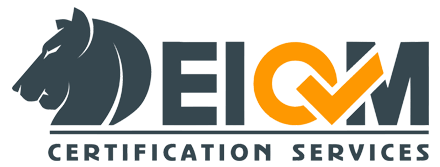Table of contents
Japanese Roots & Lean Manufacturing
The story of 5S begins in post-war Japan, when manufacturers needed a way to rebuild their industries with minimal resources. The Toyota Production System (TPS) emerged as a beacon of innovation, and one of its foundational elements was a simple yet powerful idea—workplace organization. Thus, the 5S philosophy was born:
-
Seiri (Sort) – Eliminate what you don’t need.
-
Seiton (Set in order) – Arrange what you do need.
-
Seiso (Shine) – Clean your space and identify problems.
-
Seiketsu (Standardize) – Create consistency across tasks.
-
Shitsuke (Sustain) – Maintain discipline and make it a habit.
The brilliance of 5S lies in its simplicity. No matter the size of your business or the complexity of your workflow, these five steps deliver clarity and structure. Think of it as putting glasses on a blurry process—you start seeing things more clearly, and suddenly problems become obvious, solvable, and even preventable.
What began as a Japanese technique is now global best practice. It’s become a cornerstone of Lean manufacturing and Six Sigma frameworks, used by giants like Toyota, Boeing, Nestlé, and even NASA. Today, it’s found in hospitals, warehouses, call centers, schools—anywhere work happens.
Integration with ISO Standards (9001, 14001, etc.)
Here’s where it gets even more exciting for ISO-certified businesses: 5S isn’t just complementary to your ISO goals—it directly supports them.
-
ISO 9001:2015 (Quality Management) calls for operational efficiency, workplace control, and customer satisfaction. 5S helps tick all those boxes by removing inefficiencies and improving workflows.
-
ISO 14001:2015 (Environmental Management) aligns perfectly with 5S’s waste-reduction focus, especially in Seiri and Shine stages.
-
ISO 45001 (Occupational Health & Safety) gets a major boost from 5S, particularly through hazard identification and control in daily operations.
Think of 5S as a fast-track tool that makes ISO clauses come to life on your factory floor or office desk. While ISO lays out what you must do, 5S shows how to do it in a visible, actionable way.
And for organizations seeking or renewing certification, a visible 5S culture sends a clear message to auditors: “We’re not just compliant—we’re committed.”
The 5 Pillars of 5S – Detailed Breakdown
Why 5S Matters for ISO-Certified Sites
Let’s get real—any company can talk about quality, but ISO-certified businesses need to prove it. That’s where 5S steps in. For organizations certified under ISO 9001, ISO 14001, ISO 45001, or even ISO 22000, implementing 5S is like sharpening your sword before battle. It boosts audit readiness, supports compliance clauses, and creates a culture of operational excellence that impresses both regulators and customers.
Supports ISO Clause 7.1.5 – Workplace Organization
ISO 9001:2015, Clause 7.1.5 focuses on managing “monitoring and measuring resources.” In plain English? Your tools, machines, and workspaces must be clean, calibrated, and controlled. That’s exactly what 5S delivers.
-
Sort eliminates broken or outdated tools that could lead to incorrect measurements.
-
Set in Order ensures instruments are stored correctly to avoid damage.
-
Shine keeps tools clean and surfaces dust-free, which affects accuracy.
-
Standardize brings consistency to how tools are maintained.
-
Sustain reinforces inspection routines and maintenance schedules.
This synergy between 5S and ISO clauses allows your internal audits to run smoother, with fewer nonconformities and better documentation control.
Audit Preparedness and Non-Conformance Reduction
Auditors love walking into a tidy, well-marked workspace. Why? Because it tells them two things immediately:
-
Your processes are under control.
-
Your people are engaged.
With 5S in place, you can reduce findings related to:
-
Inadequate workplace layout
-
Poor storage practices
-
Unsafe equipment conditions
-
Weak process documentation
It also allows for mock audits using 5S audit templates, which mimic real ISO inspections. This trains teams to spot gaps before auditors do, ensuring better outcomes.
Safety, Efficiency & Employee Engagement
Let’s not forget the human side. A clean, well-organized workplace is safer and less stressful. Injuries go down. Morale goes up. Why? Because people thrive in spaces where they feel in control.
5S builds a culture of respect—where every worker knows their contribution matters. It also drives continuous improvement, which is baked into ISO frameworks. When everyone’s involved in maintaining standards, the results are powerful and lasting.
Conclusion
By now, you don’t just know what is 5S—you understand why it matters, how to implement it, and the powerful benefits it brings to ISO-certified environments. From reducing waste and downtime to improving audit scores and boosting team morale, 5S is more than a method—it’s a mindset.
Let’s recap the transformation:
-
Sort helps eliminate clutter and distractions.
-
Set in Order brings clarity and structure to your workspace.
-
Shine improves cleanliness while revealing hidden problems.
-
Standardize ensures consistency and reliability across teams.
-
Sustain locks in the gains and builds a lasting culture.
5S is especially valuable for companies pursuing or maintaining ISO certifications like ISO 9001, ISO 14001, ISO 45001, or ISO 22000. It strengthens your internal controls, simplifies audits, and aligns seamlessly with ISO clauses around workplace safety, resource management, and continual improvement.
If you’re serious about taking your operations to the next level—if you want safer environments, engaged teams, and smoother audits—then 5S is your competitive edge.
At EIQM Cert, we don’t just issue ISO certificates—we help you build systems that work. Ready to start your 5S transformation with ISO alignment in mind? Reach out to us for expert consulting, templates, training, and audit readiness support.


Add a Comment